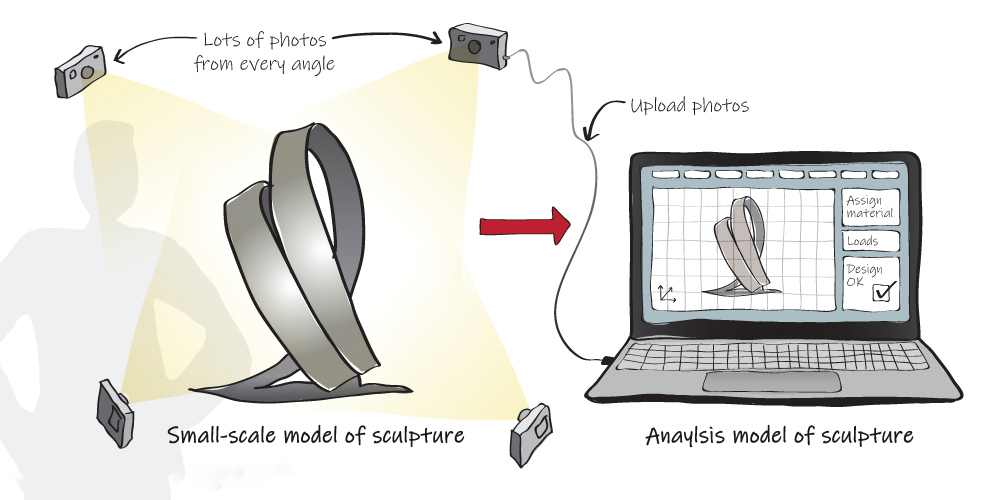Problem Statement
Construction of irregular, undulating, or three-dimensional art is a challenge all its own, but before an artist can build a large-scale piece, structural analysis is often needed to assist with design of the materials, their connections, and their foundations. Unlike a building, sculpture is often difficult to express in two-dimensional space. To conceive the piece, an artist often first builds a small-scale model about the size of a microwave oven to express complex three-dimensional geometry. Structural analysis programs have the ability to analyze irregular three-dimensional structures, but translating a physical model accurately into a 3D analysis model presents a considerable challenge.
Process
Photogrammetry is the science of taking measurements from photographs, especially for documenting the exact positions of points on surfaces. ZFA has utilized this technique to analyze multiple large-scale sculptures from a scale model provided by the artist. This is the step-by-step process from scale physical model to full-scale analytical computer model:
-
-
- Digitally photograph the scale model from every angle, making sure to capture all surfaces and edges. This may require approximately 250 photos. Differentiating marks may be required on the sculpture to ensure that the forthcoming software can identify unique points. This can be done by writing symbols and lines on masking tape and placing it on the sculpture.
- Upload the photos to a software program that can convert the images into a three-dimensional point cloud.
- Identify nodes along all edges and intersections within the point cloud to form the basic outline of the sculpture’s shape.
- Import the nodal model into CAD software. Scale the nodal model in the CAD software up to the size of the proposed real-life sculpture.
- Use the CAD software to model frame and shell elements to represent the structural components of the sculpture.
- Import the CAD model into a three-dimensional structural analysis program, such as ETABS or SAP.
- Define the properties of the frame and shell elements, identify supports, and apply loading to analyze the structure to be able to withstand self-weight, wind, earthquake, and other forces.
-
The Result
With creative, out-of-the-box analysis solutions, ZFA is able to accurately model and analyze the complex 3D geometry of nearly any shape or size of structure. This process, coupled with seasoned structural design expertise, creates a stable, safe, beautiful sculpture for patrons to enjoy for years to come.
